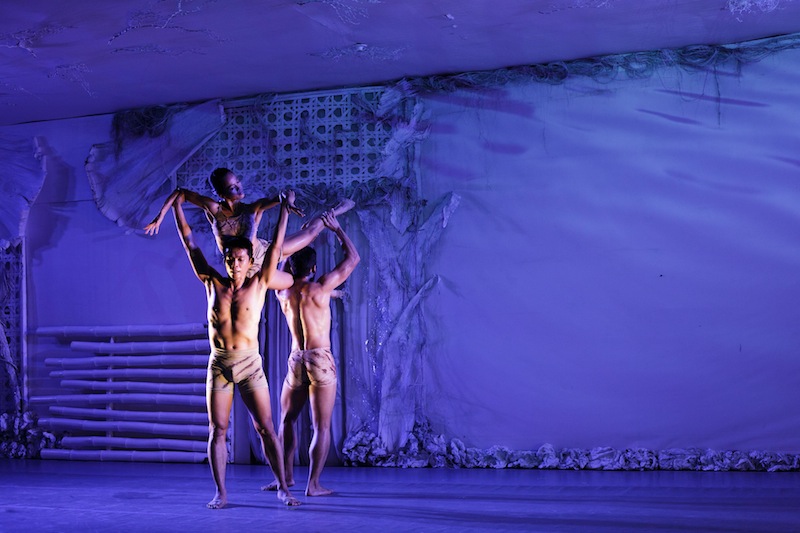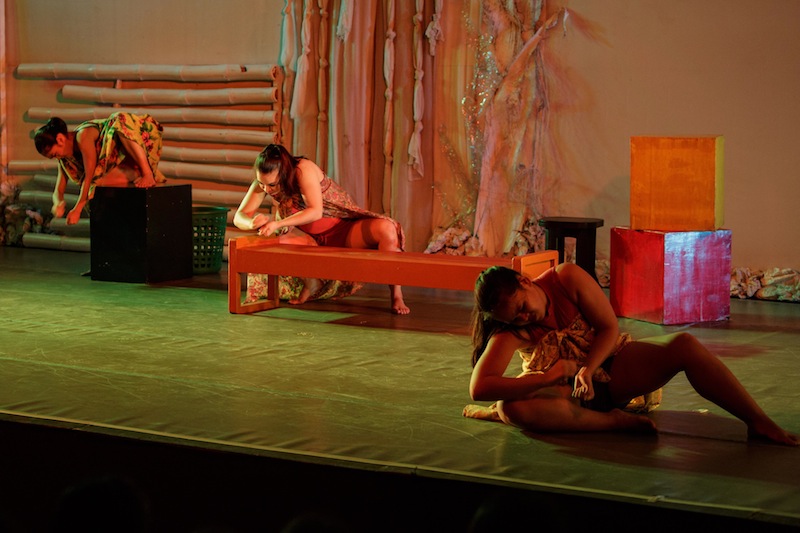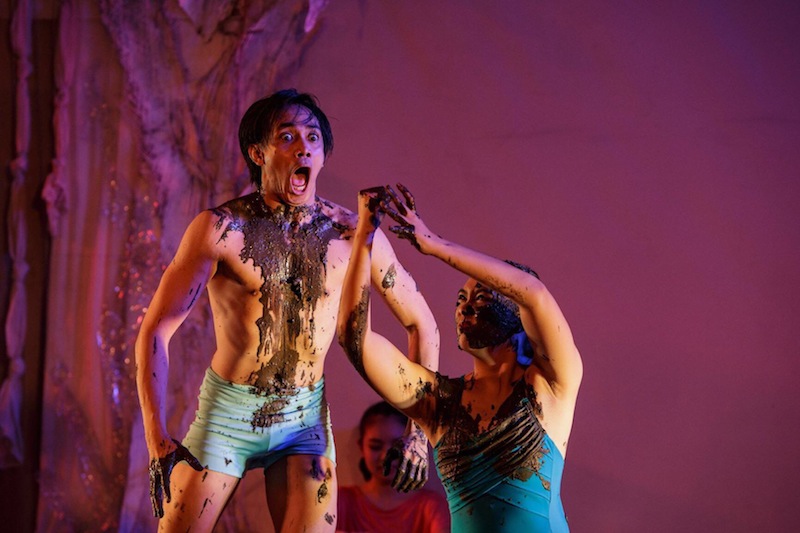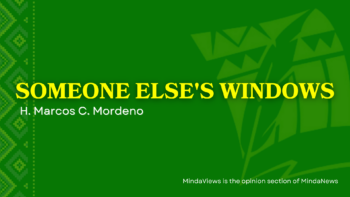DAVAO CITY (MindaNews / 25 August) — Although frail of health in recent times, her mind and heart continue to explore and calibrate new ways of artistic expression—as if to clear the ground for a bigger production in the very near future. Yielding more and more the tasks of choreography to her talented former wards in Ballet Philippines (BP), Agnes Locsin now tweaks the directorial assignment she has taken on as if to test new modes with which to structure and provide aesthetic delights.
In her recent show Elementos (Aug. 2 – 4) at the Locsin Dance Workshop in Quirino Ave., she turned over the task of choreography not only to her trusted dancers in the BP of yore but also to the young stalwarts who grew up under her tutelage at the Locsin Dance Workshop (LDW).
Alden Lugnasin was masterful shaping in slow time sensuous physical meditations on the creative force of primordial elements that comprised the main features of the show, while Biag Gaongen not only danced his familiar autochthonous writhes with muscular grace and ease in “Lupa” but also choreographed a short piece and took care of the videos and video segments that have slowly become a part of Agnes’s lyrical works here in Davao.
 Krisbelle Paclibar, Biag Gaongen and Sonny Locsin in “Tubig.” Photo by JOJO MAMANGUN
Krisbelle Paclibar, Biag Gaongen and Sonny Locsin in “Tubig.” Photo by JOJO MAMANGUN
Principal dancer Krisbelle Paclibar, a Davaoeña, was likewise given a piece to choreograph, but she also danced in “Tubig” with a disembodiment that defied gravity and appeared to just slip between and slide along the hands and bodies of Gaongen and Sonny Locsin, hovering around them like a pure and sinuous sensation refusing to condense into thought. Locsin himself, flown in from Dusseldorf in Germany, was superb in his analytical reading of the spark and spread of conflagration as consuming passion in “Apoy.”
The younger LDW alumni and teachers Monique Uy and Samantha Martin proved they can choreograph ably as well in at least four of the “vignettes” that echoed and counterpointed the main sections of the show. The disciples all did the master proud, which spoke very well indeed of the productive maieutics nurtured by Agnes between her and her dancers.
 Samantha Martin, Monique Uy and Nina Vilela in “Labada.” Photo by JOJO MAMANGUN
Samantha Martin, Monique Uy and Nina Vilela in “Labada.” Photo by JOJO MAMANGUN
As a whole, the show was very striking like a newly discovered species as director Agnes set aside the straightforward earnestness of a typical dance program and toyed this time with binaries as simple structural devices. Light and dark, flesh and image, sound and silence, high art and folk art, maturity and youth, seriousness and humor, word and wordlessness, the familiar and the strange, the shape and the improvised, the sublime and the mundane, and the abstraction of dance and the specificity of Davao realities — all were laid out in sequence like the many-colored beads of a Lumad bracelet. The appeal was Shakespearian in magnitude: there was something for everyone who watched, whether Davaoeña or not, primary grader or senior citizen, engineer or shoemaker, cognoscenti or homemaker.
 Louise Lao and John Ababon in “Mud Wrestling.” Photo by JOJO MAMANGUN
Louise Lao and John Ababon in “Mud Wrestling.” Photo by JOJO MAMANGUN
Their relatability to the situations and humor in the vignettes may have perplexed some viewers used to the fourth wall in dance performances, but the sheer spectacle of the dances and the powerful energy of the dancers must have sufficed to silence whatever need there was for a conclusive wrap of what they saw.
The benchmarking show left one with a thirst and hunger for the next living forms that Agnes will plant on the stage and let grow to ripeness in the time it takes to sit through rush-hour traffic from, say, Quirino to Tugbok.
(Poet Ricardo M. de Ungria moved to Davao City in 1999 as the first dean of the College of Humanities and Social Sciences of the then newly-established University of the Philippines Mindanao. He served as Chancellor from 2001 to 2007).
